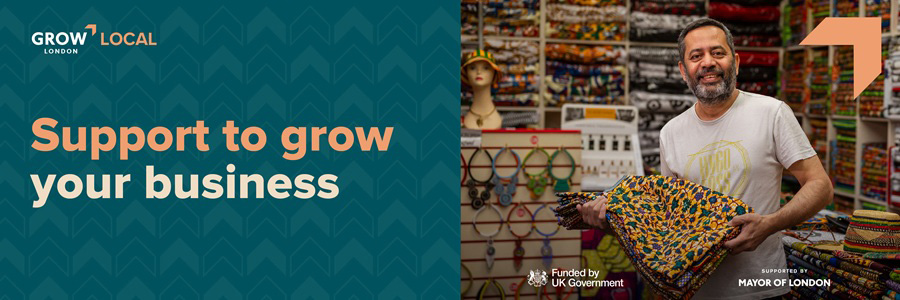How to sell a service: a guide for London-based consultants and professionals
)
Posted: Thu 31st Jul 2025
11 min read
Selling a service isn't the same as selling a product – and it's a mistake to treat them as though they are.
A product has a price tag, packaging and something physical to show for it. Services rely on something more intangible: the promise of expertise, the delivery of trust and clear outcomes.
If you're a financial adviser, legal consultant, marketing strategist or an HR expert, or you run a solo advisory practice in any other field, this guide is for you.
Whether you're just starting to look for clients or want to sharpen your current approach, here's how to sell a service properly – without waffle, without jargon and without sliding into sales patter that doesn't feel like you.
Know exactly what you're offering (and who it's for)
One of the quickest ways to lose a potential client is to describe your service in vague, all-encompassing terms. Telling someone that you "offer advice" or "help businesses grow" doesn't mean much. It's too broad.
People don't buy services because they admire your ambition – they buy them because they recognise a problem and trust you to fix it.
So, be clear. What is it exactly that you help people solve?
Cash flow issues for sole traders?
Employment contract reviews for small teams?
Lead generation problems for B2B tech firms?
The more specific you can be, the easier it is for someone to think: "That sounds like something I need."
And once you're clear on what you offer, you also need to be clear on who it's for. Don't try to appeal to everyone.
Services don't scale like products do, so the more precisely you define your audience, the more effective your message becomes.
Build trust before you sell anything
Unlike a product, a service doesn't sit on a shelf, ready to be inspected and compared. Clients don't get to try it out first.
That means their decision to buy is based on whether they trust you – your experience, your manner, your professionalism and your proof.
This doesn't require glossy branding or complicated websites. What it does require is evidence.
When someone visits your website or LinkedIn profile, they should immediately understand not just what you offer, but why you're qualified to offer it.
That might be a handful of testimonials, a brief story about how you helped a client or a short explainer about how you work.
Don't be afraid to show personality either. People want to work with someone who feels approachable. A dry, corporate tone won't win more clients – but a clear, confident voice that shows you understand their world just might.
Make your offer tangible
One of the biggest obstacles to selling a service is that, to many clients, it feels abstract.
They don't quite know what they're getting, how long it'll take or what the outcome will be. If they can't picture it, they're unlikely to commit.
The solution is to give your service a structure. Break it down into phases, outline a process or even name the service itself.
"Business development support" sounds broad and uncertain.
But something like "Three-week sales process reset" is easier to grasp – and easier to buy.
Packaging your service doesn't mean making it rigid. You can still adapt it to each client's needs. But by showing a clear start, middle and end, you give people confidence that you know what you're doing – and that there's a result at the end of it.

Sell outcomes, not hours
Many professionals default to hourly rates when pricing their work. It feels safe, measurable and easy to justify. But it's rarely the best way to sell a service.
People don't really want your time – they want what your time produces.
A client hiring a legal consultant isn't paying for five hours of labour – they're paying to avoid legal risk.
A small business hiring a financial adviser isn't buying two meetings – they're buying clarity, confidence and compliance.
Framing your work in terms of results rather than time allows you to charge based on value. It also makes things simpler for the client.
They know what they're getting and they know what it costs. That's reassuring – and it speeds up the decision to buy.
Don't wait for referrals – build a sales pipeline
It's easy to fall into the trap of relying on word-of-mouth. When the work is good, people do talk – and that matters. But it's not a strategy. It's a lucky break.
If you want consistent clients, you need to be proactive. That might mean:
Reaching out to businesses you admire and offering something tailored.
Writing a short piece of content that shows your thinking and sending it to people in your network.
Following up with someone you met six months ago.
It doesn't have to be cold calls or pushy emails. It just has to be regular, consistent and focused on helping the right people understand how you could help them.
How this works in different sectors
Selling services always comes down to solving a problem – but how you present that solution depends on the world your client lives in.
If you're an accountant or a financial adviser…
People want reassurance. They want to know their numbers are under control, their tax is sorted and they won't be caught out by something they've missed. Offering peace of mind in simple language works far better than technical detail.
If you're an HR consultant…
The pitch often centres on avoiding risk and keeping teams healthy. Business owners want to know they're on the right side of the law, but also that they're not spending money needlessly. Offer practical tools and realistic advice – no scare tactics.
If your work is in marketing or sales strategy…
The outcome matters most. Clients will be drawn to anything that suggests a measurable improvement. Whether that's leads, conversions or closing times, make the results the story.
If you're a coach, mentor or trainer…
The intangible becomes more important. You need to help people picture what's on the other side of your work. That might be more confidence, better focus or fewer blind spots. The value is personal – but no less real.
Make it easy for clients to say yes
When someone is ready to buy your service – or even just to explore it – they don't want to navigate through six steps to do so.
You should have a simple way to take the next step: it could be a quick call, a clear proposal or a short agreement that outlines what's included.
Don't make people ask for the price – have it available or at least give them a range. Be transparent about how long things take, when you're available and what's expected on both sides.
And when someone says no or not now, don't take it as a closed door. Often, people come back weeks or months later when the timing's better.
Follow up occasionally with something useful, not a sales pitch – an article you wrote, a relevant piece of news or even just a check-in.
Selling services is about solving real problems
Many sole traders and professionals dislike selling because it feels like self-promotion. But that's only the case when the focus is on you.
Shift the focus to the client's world. Think about what they're up against, what decisions they're struggling with and what's keeping them from moving forward.
When you frame your service as the answer to a specific, real-world problem, selling becomes a lot easier.
You're not trying to convince someone to want what you offer. You're helping them get to where they already want to go.
Final thoughts
Selling a service well takes more than confidence or charm. It takes clarity. It takes empathy. And above all, it takes consistency.
If you know what problem you solve and you know how to explain it in a way that matters to your clients, the rest will come.
Support available on Grow London Local
If you're looking for free support that complements the ideas in this guide, the Grow London Local platform has a growing list of practical offers tailored to London-based founders like you:
Grow London Local: Support for London's small businesses
No matter where you're based in London, you'll find relevant support and guidance on business planning, sales and marketing and much more, as well as opportunities to connect with like-minded business owners. Visit Grow London Local now
Get business support right to your inbox
Subscribe to our newsletter to receive business tips, learn about new funding programmes, join upcoming events, take e-learning courses, and more.
Start your business journey today
Take the first step to successfully starting and growing your business.
Join for free